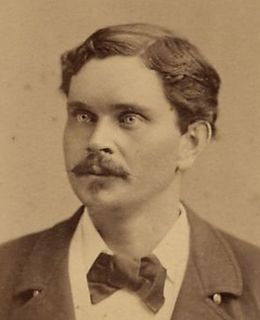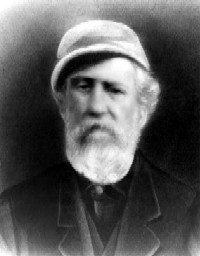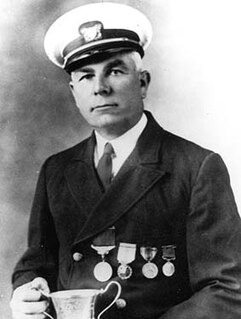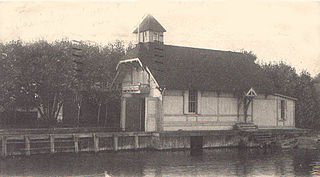 W
WPaul Boyton (1848-1924), known as the Fearless Frogman, was a showman and adventurer some credit as having spurred worldwide interest in water sports as a hobby, particularly open-water swimming. Boyton, whose birthplace is variously listed as Dublin or Pittsburgh, Pennsylvania, is best known for his water stunts that captivated the world, including crossing the English Channel in a novel rubber suit that functioned similarly to a kayak.
 W
WBenjamin Baxter Dailey was the keeper of several lifeboat stations for the United States Life-Saving Service—one of the precursor services to the United States Coast Guard.
 W
WJohn Thomas Daniels, Jr. was a member of the U.S. Life-Saving Station in Kill Devil Hills, North Carolina, who took the photograph of the first powered flight on December 17, 1903. The flight was by the Wright brothers flying their Wright Flyer. Daniels, who had never seen a camera before, later said that he was so excited by seeing the Flyer rising that he nearly forgot Orville Wright's instructions to squeeze the bulb triggering the shutter. The camera that he operated was a Gundlach Korona V view camera, which used 5-by-7-inch glass-plate negatives. The camera was owned by the Wright brothers, who were careful to record the history-making moment, and also to preserve a record for any future patent claims. The plate was not developed until the Wright Brothers returned to Ohio.
 W
WDunbar John Davis was a Keeper in the United States Life-Saving Service. During his service he was the Keeper at the Cape Fear Station and was later transferred to the Oak Island Station in 1892. Davis is known for his numerous rescues at sea, but is most famous for his daring rescue during a hurricane in 1893. In August 1893 the Sea Islands Hurricane hit the Georgia, South Carolina, and North Carolina coasts. By modern standards, it would have been a Category 3 with sustained wind speeds of 120 miles per hour (190 km/h). However, the hurricane had an unusually low pressure at 931 mbar making it one of the most powerful storms to ever hit the East Coast of the United States.
 W
WWinslow W. Griesser (1856–1931) was a station keeper in the United States Life-Saving Service, one of the agencies that were merged to form the United States Coast Guard. In 2016 the Coast Guard honored him by naming one of its new Sentinel-class cutters after him.
 W
WJoshua James was an American sea captain and a U.S. Life–Saving Station keeper. He was a famous and celebrated commander of civilian life-saving crews in the 19th century, credited with saving over 500 lives from the age of about 15 when he first associated himself with the Massachusetts Humane Society until his death at the age of 75 while on duty with the United States Life–Saving Service. During his lifetime he was honored with the highest medals of the Humane Society and the United States. His father, mother, brothers, wife, and son were also lifesavers in their own right.
 W
WLawrence Oscar Lawson was a Captain in the United States Life-Saving Service. He was given command of the Evanston, Illinois, Life–Saving Station Number 12, District 11 of the United States Life-Saving Service off the coast of Lake Michigan in 1880.
 W
WJohn Allen Midgett Jr. was a senior enlisted member of first the United States Life-Saving Service, and later the United States Coast Guard.
 W
WJoseph Napier, a station keeper for the United States Lifesaving Service founded the lifesaving station at St. Joseph, Michigan in 1876. He operated the station for many years and was credited with many dangerous and heroic rescues.